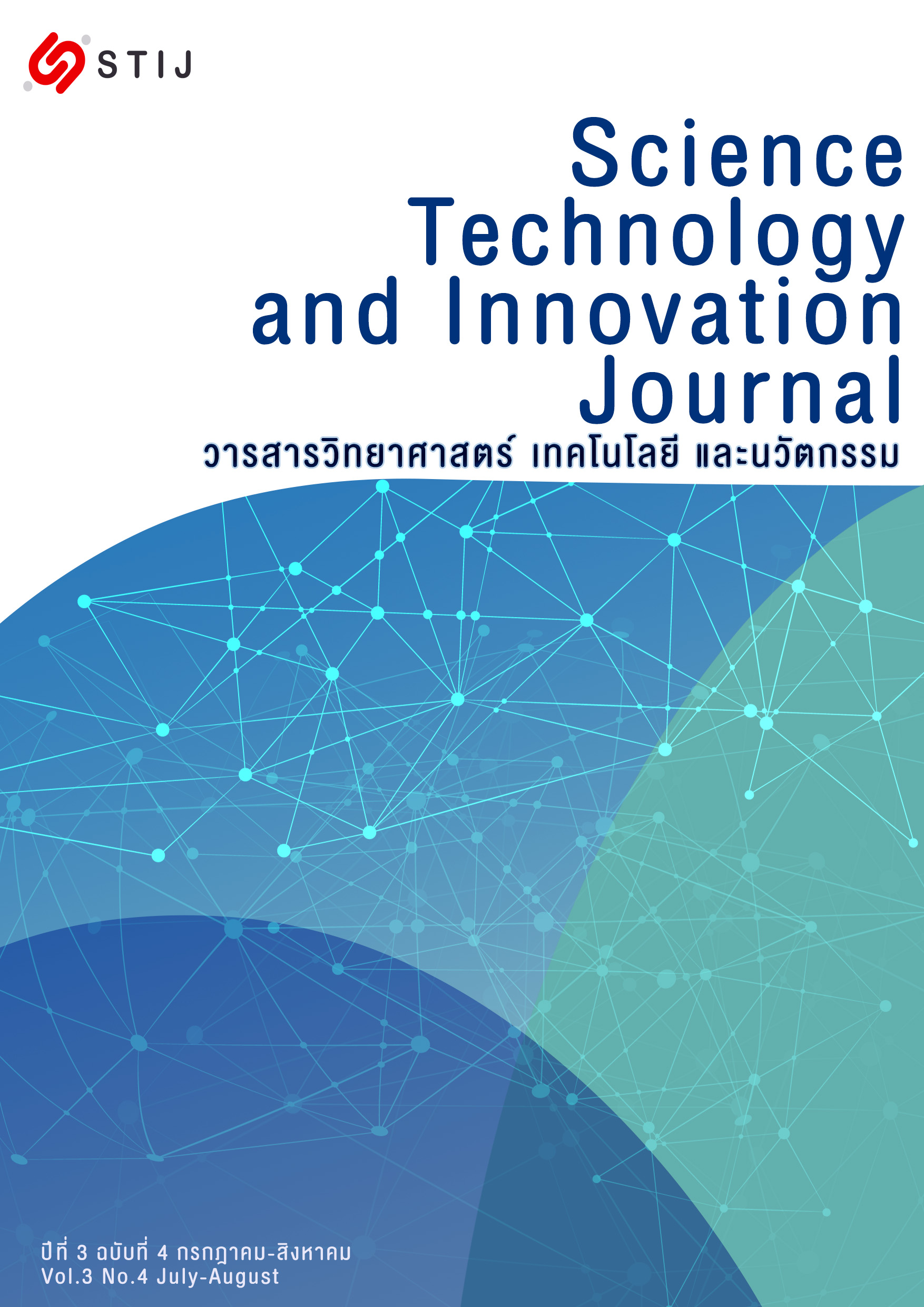Emotion and Worry Measurement Comparison of United Kingdom and Thailand During The First COVID-19 Lockdown Situation
Keywords:
COVID-19, Emotion Analysis, Anxiety, Deep Learning, LIWCAbstract
The epidemic situation of the COVID-19 and the measures to control the spread of the disease that the government enforced have greatly affected the daily lives of Thai people because they must suffer various pressures, stress, and anxiety. For this research, the researcher compared the anxiety caused by COVID-19 between UK and Thailand to see if they are similar or different. In a sentiment analysis, the data collection comes from the discussion on the web forums to collect the topics related to COVID-19 and disease control measures from the government from March 2020 to May 2020. The chosen topics were analyzed by counting the words that expressed various emotions. Thailand's information will use the AI for THAI platform under the concept of "Thai AI" by extracting emojis to express emotions that will be converted into words. The results showed that the Thai people responded most react emotionally to the matter in a sad mood. Emotions were extracted through the LIWC technique, and the results showed that most of them had more anxiety than other feelings, which were different from those in Thailand. However, most of the sorrows and worries influence jobs and incomes in both countries, but in Thailand, debt is another factor that causes more sadness than just worry. According to this research, the researcher considers it essential to study and analyze people's emotions to find out the impact on people's emotions, which may affect their lifestyles when facing other serious disease outbreaks in the future.
References
Kleinberg B, van der Vegt I, Mozes M. Measuring Emotions in the COVID-19 Real World Worry Dataset. Apr 8, 2020.
Terry PC, Parsons-Smith RL, Terry VR. Mood Responses Associated With COVID-19 Restrictions. Front Psychol. 2020;11(November):1–10.
Shereen MA, Khan S, Kazmi A, Bashir N, Siddique R. COVID-19 infection: Origin, transmission, and characteristics of human coronaviruses. J Adv Res [Internet]. 2020;24(March):91–8. Available from: https://doi.org/10.1016/j.jare.2020.03.005
Jia R, Ayling K, Chalder T, Massey A, Broadbent E, Coupland C, et al. Mental health in the UK during the COVID-19 pandemic: early observations. medRxiv [Internet]. 2020 Jan 1;2020.05.14.20102012. Available from: http://medrxiv.org/content/early/2020/05/19/2020.05.14.20102012.abstract
Mann FD, Krueger RF, Vohs KD. Personal economic anxiety in response to COVID-19. Pers Individ Dif [Internet]. 2020;167(July):110233. Available from: https://doi.org/10.1016/j.paid.2020.110233
Zsido AN, Teleki SA, Csokasi K, Rozsa S, Bandi SA. Development of the short version of the spielberger state—trait anxiety inventory. Psychiatry Res [Internet]. 2020;291(June):113223. Available from: https://doi.org/10.1016/j.psychres.2020.113223
Marks I, Lader M. Anxiety states (anxiety neurosis): A review. Vol. 156, Journal of Nervous and Mental Disease. US: Lippincott Williams & Wilkins; 1973. p. 3–18.
Khosravi M. Perceived risk of COVID-19 pandemic: The role of public worry and trust. Electron J Gen Med. 2020;17(4):1–2.
Plunkett R, Costello S, McGovern M, McDonald C, Hallahan B. Impact of the COVID-19 pandemic on patients with pre-existing anxiety disorders attending secondary care. Ir J Psychol Med. 2021;38(2):123–31.
Geoffrey Wango D, Wairire PG, Kimamo DC. Anxiety and Emotions of COVID-19: The Emotional Underpinnings of Dealing with the Corona Virus Disease. J Psychol Behav Sci. 2020;8(2).
Fardin MA. Covid-19 and anxiety: A review of psychological impacts of infectious disease outbreaks. Arch Clin Infect Dis. 2020;15(COVID-19):11–3.
Jiang N, Yan-Li S, Pamanee K, Sriyanto J. Depression, Anxiety, and Stress During the COVID-19 Pandemic: Comparison Among Higher Education Students in Four Countries in the Asia-Pacific Region. J Popul Soc Stud. 2021;29:370–83.
Tausczik YR, Pennebaker JW. The Psychological Meaning of Words: LIWC and Computerized Text Analysis Methods. J Lang Soc Psychol [Internet]. 2009 Dec 8;29(1):24–54. Available from: https://doi.org/10.1177/0261927X09351676
Meier T, Boyd R, Pennebaker J, Mehl M, Martin M, Wolf M, et al. “LIWC auf Deutsch”: The Development, Psychometrics, and Introduction of DE- LIWC2015. 2019;(February).
Kahn JH, Tobin RM, Massey AE, Anderson JA. Measuring emotional expression with the Linguistic Inquiry and Word Count. Am J Psychol. 2007;120(2):263–86.
Pope D, Griffith J. An Analysis of Online Twitter Sentiment Surrounding the European Refugee Crisis. In: KDIR. 2016.
Zebb BJ, Beck JG. Worry versus anxiety: Is there really a difference? Behav Modif. 1998;22(1):45–61.
กลิ่นหอม พ. การวิเคราะห์มุมมองของผู้บริโภคผ่านการแสดงความคิดเห็น (ข้อคอมเมนต์) ของผู้บริโภคที่มีต่อสินค้าสมาร์ตโฟนบนโซเชียลมีเดีย. มหาวิทยาลัยนเรศวร; 2021.
National Electronics and Computer Technology Center (NECTEC). (n.d.). AI for Thai - thai ai service platform [อินเทอร์เน็ต]. 2564 [เข้าถึงเมื่อ 2564 พฤษภาคม 25]. เข้าถึงได้จาก https://aiforthai.in.th/aiplatform/#/emoji.
Additional Files
Published
How to Cite
Issue
Section
License
Copyright (c) 2022 Science Technology and Innovation Journal

This work is licensed under a Creative Commons Attribution-NonCommercial-NoDerivatives 4.0 International License.
1. Every article published must be considered academic quality from 3 peers review experts per article.
2. The text or comments in this issue of science, technology and innovation journals belong to the author of the article. The journal organizers do not need to agree.
3. The editorial department of Science, Technology and Innovation Journal does not claim copy rights but provides references.


